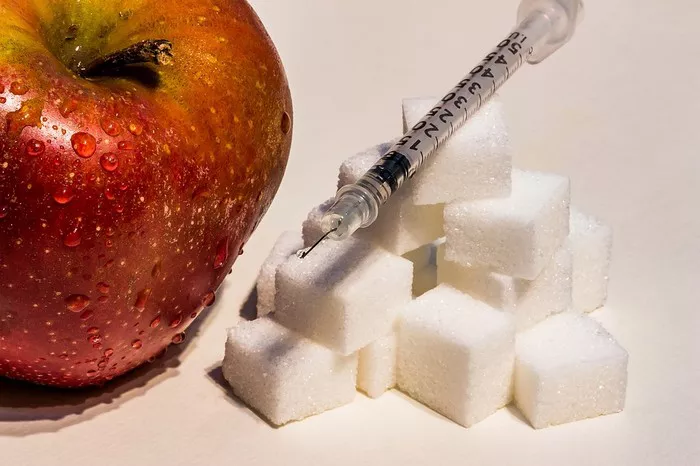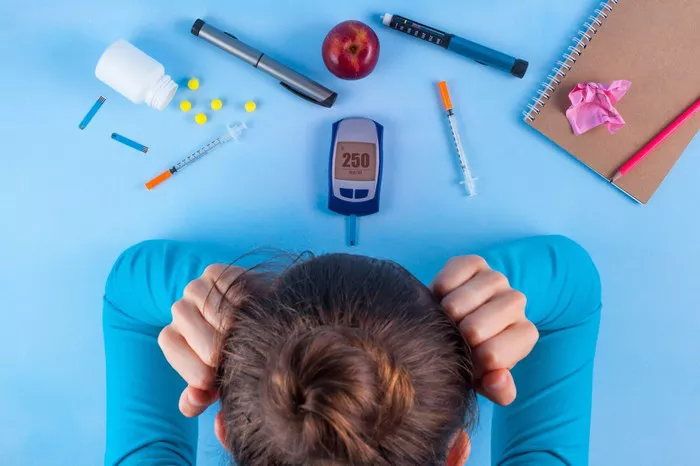Type 2 diabetes mellitus (T2DM) is a complex metabolic disorder characterized by chronic hyperglycemia due to insulin resistance and an eventual decline in insulin production by pancreatic β-cells. Insulin, a hormone produced by the pancreas, plays a critical role in regulating blood glucose levels. This article delves into the multifaceted role of insulin in managing type 2 diabetes, examining its physiological effects, mechanisms of action, therapeutic applications, and implications for long-term health outcomes.
Physiology of Insulin
Insulin is a peptide hormone produced by the β-cells of the islets of Langerhans in the pancreas. It is essential for the metabolism of carbohydrates, fats, and proteins. When food is ingested, carbohydrates are broken down into glucose, which enters the bloodstream. The rise in blood glucose levels signals the pancreas to release insulin. Insulin facilitates the uptake of glucose by cells, primarily in the liver, muscle, and adipose tissue, where it is either stored as glycogen or used for energy production. This process lowers blood glucose levels to within a normal range, preventing hyperglycemia.
Mechanisms of Insulin Action
Glucose Uptake and Utilization
Insulin promotes glucose uptake by increasing the number of glucose transporter proteins (GLUT4) on the surface of muscle and adipose cells. This action allows glucose to enter the cells more efficiently. In the liver, insulin stimulates glycogenesis, the conversion of glucose to glycogen for storage. It also inhibits gluconeogenesis, the production of glucose from non-carbohydrate sources, thus reducing the amount of glucose released into the bloodstream.
Lipid Metabolism
Insulin has significant effects on lipid metabolism. It inhibits lipolysis, the breakdown of fats into free fatty acids, in adipose tissue. By promoting the storage of triglycerides, insulin helps prevent an excessive release of free fatty acids into the bloodstream, which can lead to insulin resistance and other metabolic disturbances.
Protein Metabolism
Insulin facilitates the uptake of amino acids into cells, promoting protein synthesis and inhibiting protein degradation. This anabolic effect is crucial for maintaining muscle mass and overall body protein stores.
Insulin Resistance in Type 2 Diabetes
In type 2 diabetes, the body’s cells become resistant to the effects of insulin, leading to impaired glucose uptake and utilization. This condition, known as insulin resistance, is often accompanied by a progressive decline in insulin production by the pancreatic β-cells. The exact cause of insulin resistance is multifactorial, involving genetic predisposition, obesity, physical inactivity, and other lifestyle factors.
Therapeutic Use of Insulin in Type 2 Diabetes
Despite the availability of various oral and injectable medications for type 2 diabetes, insulin therapy remains a cornerstone of treatment for many patients, particularly those with advanced disease or significant β-cell dysfunction. Insulin therapy can be tailored to individual needs and may involve different types of insulin formulations and delivery methods.
Types of Insulin
Insulin formulations vary based on their onset, peak, and duration of action. They can be broadly categorized into:
- Rapid-acting insulins: These include insulin lispro, aspart, and glulisine. They begin to work within 15 minutes, peak in about 1 hour, and last for 2 to 4 hours. They are typically used before meals to manage postprandial glucose spikes.
- Short-acting insulins: Regular insulin falls into this category. It starts working within 30 minutes, peaks in 2 to 3 hours, and lasts for 3 to 6 hours. It can be used for mealtime glucose control.
- Intermediate-acting insulins: NPH insulin is an example. It begins to work in 2 to 4 hours, peaks in 4 to 12 hours, and lasts for 12 to 18 hours. It is often used in combination with short- or rapid-acting insulins.
- Long-acting insulins: These include insulin glargine, detemir, and degludec. They provide a steady level of insulin over 24 hours or more, with minimal peaks, and are usually administered once or twice daily for basal glucose control.
Insulin Regimens
Insulin regimens for type 2 diabetes can be customized based on the patient’s lifestyle, blood glucose patterns, and treatment goals. Common regimens include:
- Basal-only regimen: Long-acting insulin is used to maintain fasting and between-meal glucose levels. This regimen is often initiated when oral medications are insufficient.
- Basal-bolus regimen: A combination of long-acting insulin for basal coverage and rapid-acting insulin for mealtime glucose control. This approach mimics the body’s natural insulin pattern and provides tight glucose control.
- Premixed insulin regimen: Premixed formulations combine intermediate-acting and rapid- or short-acting insulin in fixed ratios. They simplify the dosing schedule but offer less flexibility in adjusting individual components.
Initiating and Adjusting Insulin Therapy
Initiating insulin therapy in type 2 diabetes requires careful consideration of the patient’s current treatment regimen, glycemic control, and potential barriers to insulin use, such as fear of injections or concerns about weight gain. A stepwise approach is often recommended:
- Starting Basal Insulin: For patients inadequately controlled on oral agents, adding a single daily dose of long-acting insulin is a common starting point. The initial dose can be weight-based (e.g., 0.1-0.2 units/kg) or fixed (e.g., 10 units), with subsequent adjustments based on fasting glucose levels.
- Intensifying Therapy: If basal insulin alone does not achieve target glucose levels, adding rapid-acting insulin before meals (basal-bolus regimen) may be necessary. Alternatively, switching to a premixed insulin regimen can be considered for patients who prefer fewer injections.
- Adjusting Doses: Regular monitoring of blood glucose levels is essential for adjusting insulin doses. Self-monitoring of blood glucose (SMBG) helps identify patterns and guide dose modifications. Continuous glucose monitoring (CGM) systems offer more comprehensive data and can be particularly useful for patients with fluctuating glucose levels.
Benefits of Insulin Therapy
Insulin therapy offers several benefits for patients with type 2 diabetes:
- Improved Glycemic Control: Insulin is the most effective agent for lowering blood glucose levels, often achieving target A1C levels when other treatments fail.
- Flexibility: Insulin therapy can be tailored to individual needs, allowing for adjustments based on lifestyle, dietary patterns, and blood glucose trends.
- Preservation of β-cell Function: Early initiation of insulin therapy may help preserve residual β-cell function, potentially delaying disease progression.
- Management of Acute Hyperglycemia: Insulin is the treatment of choice for managing acute hyperglycemic crises, such as diabetic ketoacidosis (DKA) or hyperosmolar hyperglycemic state (HHS).
Challenges and Considerations
Despite its benefits, insulin therapy also presents challenges that must be addressed to optimize outcomes:
- Hypoglycemia: The risk of hypoglycemia, or low blood glucose levels, is a significant concern with insulin therapy. Patients must be educated on recognizing and managing hypoglycemia, including carrying fast-acting glucose sources.
- Weight Gain: Insulin therapy can lead to weight gain, which may exacerbate insulin resistance. Strategies to mitigate weight gain include dietary modifications, physical activity, and using insulin-sensitizing agents like metformin.
- Injection Burden: The need for multiple daily injections can be a barrier to adherence. Insulin pens, pumps, and newer delivery systems, such as inhaled insulin, aim to improve convenience and reduce the burden.
- Cost: The cost of insulin and associated supplies can be a barrier for many patients. Clinicians should be aware of available resources, such as patient assistance programs, to help reduce financial barriers.
Future Directions in Insulin Therapy
Advances in insulin formulations and delivery systems continue to improve the management of type 2 diabetes. Some promising developments include:
- Ultra-rapid-acting Insulins: New formulations with faster onset and shorter duration of action can provide more physiological mealtime glucose control.
- Biosimilar Insulins: These are designed to be similar to existing insulin analogs, offering potentially lower-cost alternatives.
- Smart Insulin Pens: These devices integrate with mobile apps to track insulin doses and provide reminders, improving adherence and glycemic control.
- Closed-loop Systems: Also known as artificial pancreas systems, these combine insulin pumps with continuous glucose monitors and automated insulin delivery algorithms to provide near-physiological glucose control.
See also: What Are The Health Risks Related To Type 2 Diabetes
Conclusion
Insulin plays a vital role in the management of type 2 diabetes, particularly for patients with significant insulin resistance or β-cell dysfunction. Its ability to effectively lower blood glucose levels and provide flexible dosing options makes it an essential component of diabetes care. However, the initiation and adjustment of insulin therapy require careful consideration of individual patient factors, education on potential challenges, and ongoing monitoring to optimize outcomes. As advancements in insulin formulations and delivery systems continue, the future of insulin therapy holds promise for even better management of type 2 diabetes.
Related topics:
What’s the Safest Medicine for Type 2 Diabetes



























